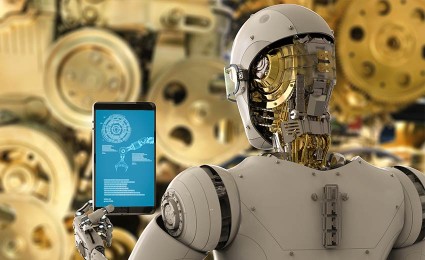

On the way to smart procurement
Most digitization projects start with new products and services at the interface with the customer, or, in production, with topics such as Industry 4.0. Purchasing plays a minor role, if any.
Wrongly, we believe. The digital transformation has enormous potential for procurement. The large number of transactions, partners and the sheer volume of data makes it a prime candidate for automation and the use of Artificial Intelligence (AI) and Robotic Process Automation (RPA).
But how does it work exactly?
The first element is RPA. It enables the relatively simple automation of repetitive processes by mimicking the behavior of human users – clicking through programs while reading, comparing figures, entering data, and so on. It is placed "on top" of the existing application landscape with hardly any programming effort and can therefore be deployed quickly and flexibly, in a matter of days. This avoids the cost and time typically associated with complex IT projects.
Highly repetitive tasks such as invoice verification and payment approvals can easily be automated by RPA. This frees up qualified purchasing staff for other, more profitable tasks. RPA is already being used successfully in procurement, mainly in the area of purchase-to-pay (P2P). In the future, solutions will become smarter and able to perform more and more tasks independently.

The second element is Artificial Intelligence, currently being hailed as the next big thing. AI has the power to automate complex non-standard processes. There is a gray area between Big Data and AI; both disciplines aim to generate better insights from large amounts of data. Simply put, AI makes it possible to answer many complex questions that traditional Big Data algorithms were not able to solve. Both technologies depend on substantive data management, which is often lacking or very hard to gather due to the size and complexity of today's enterprises.
If you have the necessary data at your disposal, AI can significantly improve your processes and insights. For example, it can enhance your spend analytics and identify leakage. It can also be used to create a self-learning chatbot, reducing the number of free-text orders.
RPA and AI together lead to better informed, faster decisions. They improve fraud prevention and make it easier to identify suitable suppliers. They increase compliance and the integration of the supply chain and purchasing. They thus tackle many of the pain points in the procurement process, offering effective solutions that can generate outstanding ROIs.
One thing is very important, however. Selecting the right tools represents the end of the process. The beginning of the process must be a discussion about the goals of digitizing procurement and the right strategy to be followed.
Intelligent applications can redesign value chains and supply chains. They can, through evidence-based actions, generate value that goes far beyond the savings and efficiency gains in procurement itself. When properly selected and implemented at the culmination of a comprehensive strategy process, they can not only give procurement new impetus, but perhaps even a new strategic dimension within the company – as an internal pioneer of digital transformation.



